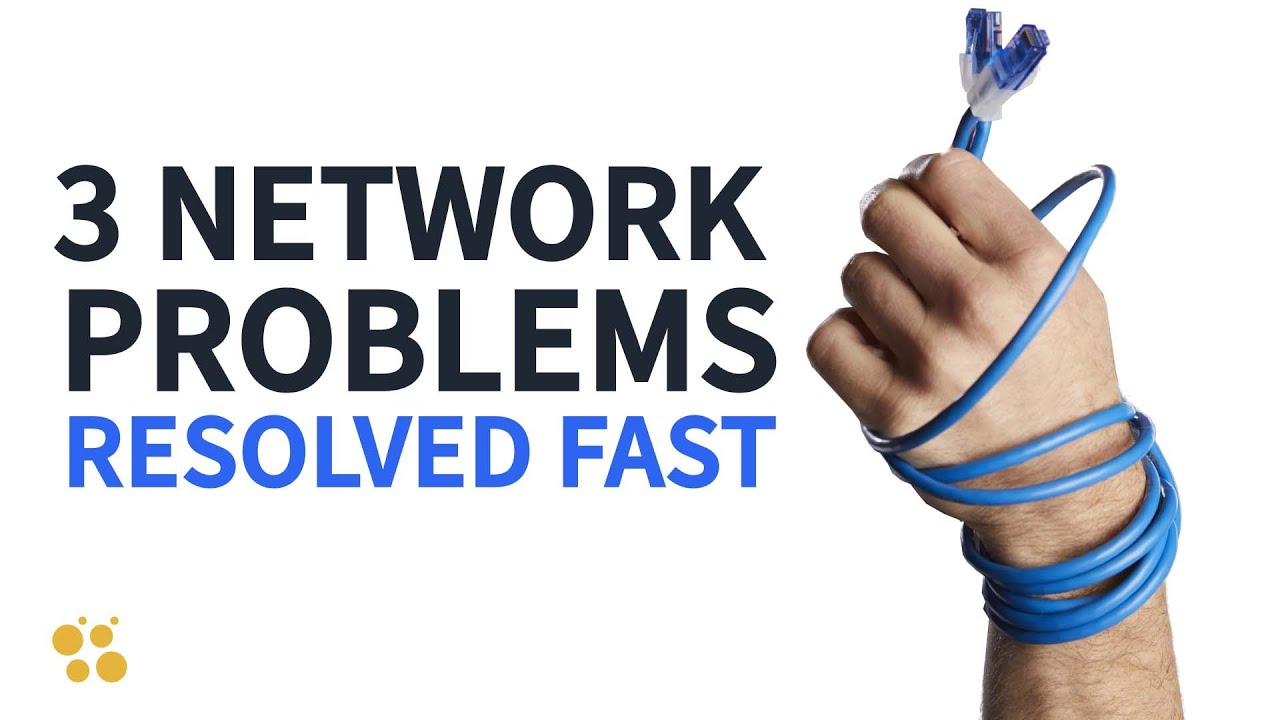Introduction
In today’s fast-paced business environment, a slow and unreliable network can be a significant hindrance to productivity and overall success. As companies increasingly rely on technology, understanding the underlying issues that may be affecting business network issues and network performance is crucial. This article delves into five hidden network issues, particularly focusing on business network issues, that could be slowing down your business, helping you identify potential problems and implement effective solutions.
We will explore network congestion, outdated hardware, misconfigured settings, insufficient bandwidth, and security vulnerabilities. By the end, you will have a clearer picture of how these factors impact your network and what steps you can take to optimize your systems for improved performance.
Addressing business network issues promptly can mitigate risks and enhance performance.
Recognizing and addressing business network issues early can save your organization time and resources.
1. Network Congestion
Understanding Network Congestion
It's essential to recognize that business network issues can lead to unforeseen challenges that impact productivity.
As businesses face increasing technology demands, the prevalence of business network issues becomes more apparent.
Be vigilant for signs indicating that business network issues are affecting your operations.
Network congestion occurs when the demand for network resources exceeds the available capacity, leading to diminished performance. This situation can arise due to various factors, including an increase in connected devices, heavy data usage during peak hours, or insufficient network infrastructure. Understanding the root causes of congestion can help you address the issue effectively.
Congestion can manifest in several ways, including slow file transfers, lagging online applications, and poor video streaming quality. As businesses grow and adopt more technology, the risk of network congestion becomes more pronounced, making it essential to monitor and manage network traffic actively.
Signs of Network Congestion
Some common indicators of network congestion include:
- Frequent buffering during video conferences.
- Slow access to cloud-based applications.
- Increased latency in online transactions.
- Intermittent disconnections from Wi-Fi networks.
If you notice these symptoms, it could indicate that network congestion is affecting your business operations.
Identifying these signs can help you tackle business network issues before they escalate.
Implementing solutions for business network issues is crucial for maintaining efficient operations.
By prioritizing solutions for business network issues, you can enhance productivity and reduce downtime.
Solutions for Reducing Congestion
Following through on these strategies can significantly mitigate business network issues.
Regular reviews of network settings can help prevent business network issues from arising.
To alleviate network congestion, consider the following strategies:
- Implement Quality of Service (QoS) settings to prioritize critical applications.
- Upgrade your network infrastructure, including routers and switches, to handle higher traffic.
- Utilize bandwidth management tools to monitor and control network usage.
- Encourage employees to schedule large data transfers during off-peak times.
By adopting these measures, you can enhance your network’s performance and reduce congestion-related issues.

2. Outdated Hardware
Identifying Outdated Devices
Outdated hardware can severely hinder network performance, resulting in slower speeds and increased downtime. Over time, devices such as routers, switches, and access points may become obsolete, unable to support modern applications and the growing number of connected devices.
Regularly audit your network hardware to determine if any devices are no longer meeting your business needs. Look for signs like frequent device failures, incompatibility with current software, or lack of support from manufacturers.
Impact on Network Performance Issues
The performance impact of outdated hardware can be significant. As technology evolves, newer standards and protocols are introduced, and older devices may not be compatible. Consequently, businesses may experience slow data transfer speeds, dropped connections, and increased maintenance costs due to frequent repairs.
Moreover, outdated hardware may struggle to secure your network against modern threats, leaving your business vulnerable to cyberattacks.
Upgrading Your Hardware
Investing in updated hardware can prevent many common business network issues.
Investing in updated hardware is essential for maintaining optimal network performance. Consider the following tips when upgrading:
- Assess the current network load and future growth projections to choose appropriate hardware.
- Research devices that align with the latest technology standards.
- Implement redundancy by having backup devices in case of failure.
By upgrading your hardware, you can improve network reliability and ensure that your systems can handle evolving business demands effectively.
3. Misconfigured Settings
Common Misconfigurations
Additionally, maintaining a secure environment can mitigate business network issues effectively.
Network performance can suffer due to misconfigured settings in routers, switches, and firewalls. Some common issues include incorrect IP addressing, improper routing configurations, and inadequate firewall rules that can either block legitimate traffic or allow unwanted access.
How to Audit Your Network Settings
Conducting a network audit is essential for identifying misconfigurations. Start by mapping out your network topology, documenting device configurations, and assessing firewall rules. Use network monitoring tools to identify bottlenecks and track performance metrics.
Collaborate with your IT team or enlist the help of external professionals to perform thorough audits. Creating a checklist of configurations can streamline the process and ensure no critical aspect is overlooked.
Ensuring proper configuration can minimize potential business network issues.
Steps to Proper Configuration
To ensure your network is configured correctly, follow these steps:
- Establish a baseline configuration for all devices and document any changes made.
- Regularly update firmware on all hardware to address security vulnerabilities.
- Utilize automated tools to monitor configurations and alert you to any unauthorized changes.
Proper configuration can significantly enhance your network’s performance and security, minimizing the risk of future issues.
4. Insufficient Bandwidth
Assessing Your Bandwidth Needs
Bandwidth is the capacity of your network to transmit data, and insufficient bandwidth can lead to slow connections, especially during peak usage times. Businesses must assess their bandwidth requirements based on the number of users, types of applications used, and overall data consumption patterns.
When assessing bandwidth, consider how it relates to potential business network issues.
Effects of Insufficient Bandwidth on Small Business IT Problems
When bandwidth is inadequate, it can lead to a range of IT problems, significantly impacting productivity. Employees may spend more time waiting for applications to load or files to transfer, negatively affecting their ability to complete tasks efficiently.
As small businesses often operate on tight schedules, these delays can result in missed deadlines and increased frustration among staff. Additionally, insufficient bandwidth can hinder collaboration, affecting overall team dynamics and project outcomes.
Enhancing Bandwidth for Better Performance
To improve bandwidth and ensure smooth network operations, consider the following strategies:
- Upgrade your internet plan to a higher speed tier offered by your service provider.
- Implement network segmentation to prioritize critical applications and reduce unnecessary traffic.
- Utilize bandwidth aggregation techniques to combine multiple connections for improved throughput.
By enhancing your bandwidth, you can optimize performance and ensure your network supports your business operations effectively.

Upgrading your plan is vital for addressing business network issues effectively.
5. Security Vulnerabilities
Identifying Security Risks in Your Network
Security vulnerabilities in the network can not only lead to data breaches but can also slow down performance, as compromised systems may struggle under the load of unauthorized access attempts. Regularly assessing your network for potential risks is essential for maintaining security and performance.
Recognizing and mitigating business network issues will enhance your overall operations.
Addressing security vulnerabilities is crucial in preventing business network issues.
Some common security risks include outdated software, weak passwords, and unpatched vulnerabilities in hardware. Conducting regular security assessments can help identify these risks and facilitate proactive measures.
Impact on Network Performance and Business Operations
Security breaches can have a profound impact on business operations. In addition to the immediate threat of data loss or theft, compromised networks may experience disruptions that slow down critical processes. Furthermore, the aftermath of a security breach often involves time-consuming recovery efforts that divert resources away from regular business activities.
Unresolved security vulnerabilities can also lead to a loss of customer trust and damage to your business's reputation, ultimately affecting bottom-line performance.
Strategies for Securing Your Network
To secure your network effectively, consider these strategies:
- Implement regular software updates to patch vulnerabilities.
- Train employees on cybersecurity best practices to reduce the risk of human error.
- Utilize network monitoring tools to detect unusual activity and respond swiftly.
Instituting a proactive security policy can help prevent business network issues from escalating.
By prioritizing network security, you can protect your business while ensuring optimal performance and reliability.
Employees should be educated to recognize business network issues before they become critical.
Conclusion
Network monitoring tools can detect early signs of business network issues.
In summary, hidden network issues such as congestion, outdated hardware, misconfigured settings, insufficient bandwidth, and security vulnerabilities can significantly slow down your business operations. By identifying these problems and implementing appropriate solutions, you can enhance your network’s performance, ensuring your team remains productive and efficient.
Taking proactive steps to address these hidden issues will not only improve day-to-day operations but also position your business for future growth and resilience in the face of evolving technological challenges. Investing time and resources into optimizing your network today will pay dividends in the long run, safeguarding your business against potential setbacks.
In summary, addressing business network issues is critical for maintaining operational efficiency.
By improving network performance, you can significantly reduce business network issues.

To mitigate business network issues, consider implementing a comprehensive strategy.
FAQs
What are the signs of network congestion?
Signs of network congestion include slow access to applications, frequent buffering during video calls, and increased latency during transactions.
How often should I upgrade my network hardware?
It is advisable to review your network hardware every three to five years, depending on technological advancements and your business's growth.
What tools can I use to monitor my network settings?
There are various tools available, such as SolarWinds, PRTG Network Monitor, and Nagios, which can help track and audit network settings.
How can I assess my bandwidth needs?
To assess bandwidth needs, analyze your current network usage, consider the number of users, and evaluate the types of applications being used.
What are some common security vulnerabilities to watch for?
Common security vulnerabilities include outdated software, weak passwords, unpatched hardware, and inadequate firewall protections.
Solving Hidden Network Problems That Hurt Business Performance
Hidden network issues can be a silent killer, slowly draining your business's productivity and profitability. From intermittent outages to bandwidth bottlenecks, these problems can have a profound impact on your operations. But fear not, there are solutions for business outages and network problems that can help you regain control. By identifying and addressing these hidden culprits, you can unlock the full potential of your business network, ensuring seamless communication, efficient workflows, and a competitive edge in today's fast-paced digital landscape.
How Addressing Network Problems Leads to Better Business Outcomes
Network problems and solutions are critical to maintaining a high-performing business. Identifying and addressing common IT issues, such as outdated hardware, misconfigured settings, and bandwidth bottlenecks, can significantly improve your organization's efficiency and productivity. By proactively monitoring and resolving these hidden network issues, you can ensure seamless communication, faster data transfer, and uninterrupted access to essential resources, ultimately driving your business forward.
The Real Cost of a Poorly Performing Network
Business network problems can have a profound impact on your organization's productivity, communication, and operational efficiency. Hidden issues such as outdated hardware, misconfigured settings, or bandwidth bottlenecks can lead to sluggish data transfer, dropped connections, and frustrating delays that hinder your team's ability to collaborate, access critical information, and deliver on your business objectives. By proactively identifying and addressing these underlying network challenges, you can ensure a seamless digital infrastructure that empowers your workforce, streamlines workflows, and drives your business forward.
Improving Business Efficiency Through Better Network Solutions
Ultimately, ensuring optimal network performance can safeguard against business network issues.
Hidden network issues are often overlooked, yet they can severely disrupt communication, reduce operational efficiency, and slow down overall business performance. These challenges—ranging from outdated hardware to misconfigured systems—represent common problems and solutions for business that are critical to address. By identifying and resolving these network weaknesses, companies can enhance connectivity, support smoother collaboration, and ensure the digital backbone of their organization is reliable and scalable.
Struggling With Network Performance? Topshelf Technology Can Help
By prioritizing solutions for business network issues, your business can thrive in a competitive landscape.
If your business is experiencing slow connections, dropped data, or inconsistent performance, you're not alone. At Topshelf Technology, we specialize in diagnosing and resolving the exact kinds of hidden network issues covered in this post. From bandwidth optimization to security hardening and hardware upgrades, we ensure your infrastructure supports your business goals — not slows them down.
Explore Our Managed IT Solutions for Seamless Network Operations
Our Managed IT Services provide proactive monitoring, troubleshooting, and optimization for small to mid-sized businesses. We don’t just react to network problems — we prevent them. Whether you need reliable uptime, better remote access, or scalable infrastructure, Topshelf Technology offers tailored solutions that grow with your business and keep your team connected.




